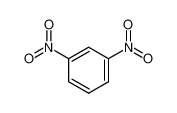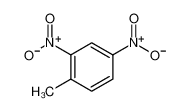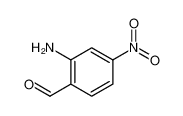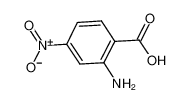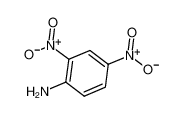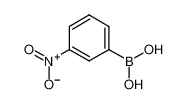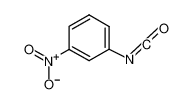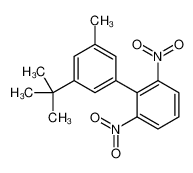1.Identification
1.1 GHS Product identifier
| Product name | 1,3-dinitrobenzene |
|---|
1.2 Other means of identification
| Product number | - |
|---|---|
| Other names | m-Dinitrobenzene |
1.3 Recommended use of the chemical and restrictions on use
| Identified uses | For industry use only. |
|---|---|
| Uses advised against | no data available |
1.4 Supplier's details
| Company | MOLBASE (Shanghai) Biotechnology Co., Ltd. |
|---|---|
| Address | Floor 4 & 5, Building 12, No. 1001 North Qinzhou Road, Xuhui District, Shanghai, China |
| Telephone | +86(21)64956998 |
| Fax | +86(21)54365166 |
1.5 Emergency phone number
| Emergency phone number | +86-400-6021-666 |
|---|---|
| Service hours | Monday to Friday, 9am-5pm (Standard time zone: UTC/GMT +8 hours). |
2.Hazard identification
2.1 Classification of the substance or mixture
Acute toxicity - Oral, Category 2
Acute toxicity - Dermal, Category 1
Acute toxicity - Inhalation, Category 2
Specific target organ toxicity – repeated exposure, Category 2
Hazardous to the aquatic environment, short-term (Acute) - Category Acute 1
Hazardous to the aquatic environment, long-term (Chronic) - Category Chronic 1
2.2 GHS label elements, including precautionary statements
| Pictogram(s) |    |
|---|---|
| Signal word | Danger |
| Hazard statement(s) | H300 Fatal if swallowed H310 Fatal in contact with skin H330 Fatal if inhaled H410 Very toxic to aquatic life with long lasting effects |
| Precautionary statement(s) | |
| Prevention | P264 Wash ... thoroughly after handling. P270 Do not eat, drink or smoke when using this product. P262 Do not get in eyes, on skin, or on clothing. P280 Wear protective gloves/protective clothing/eye protection/face protection. P260 Do not breathe dust/fume/gas/mist/vapours/spray. P271 Use only outdoors or in a well-ventilated area. P284 [In case of inadequate ventilation] wear respiratory protection. P273 Avoid release to the environment. |
| Response | P301+P310 IF SWALLOWED: Immediately call a POISON CENTER/doctor/… P321 Specific treatment (see ... on this label). P330 Rinse mouth. P302+P352 IF ON SKIN: Wash with plenty of water/... P310 Immediately call a POISON CENTER/doctor/… P361+P364 Take off immediately all contaminated clothing and wash it before reuse. P304+P340 IF INHALED: Remove person to fresh air and keep comfortable for breathing. P320 Specific treatment is urgent (see ... on this label). P314 Get medical advice/attention if you feel unwell. P391 Collect spillage. |
| Storage | P405 Store locked up. P403+P233 Store in a well-ventilated place. Keep container tightly closed. |
| Disposal | P501 Dispose of contents/container to ... |
2.3 Other hazards which do not result in classification
none
3.Composition/information on ingredients
3.1 Substances
| Chemical name | Common names and synonyms | CAS number | EC number | Concentration |
|---|---|---|---|---|
| 1,3-dinitrobenzene | 1,3-dinitrobenzene | 99-65-0 | none | 100% |
4.First-aid measures
4.1 Description of necessary first-aid measures
General advice
Consult a physician. Show this safety data sheet to the doctor in attendance.
If inhaled
Fresh air, rest. Artificial respiration may be needed. Refer for medical attention.
In case of skin contact
Remove contaminated clothes. Rinse and then wash skin with water and soap. Refer for medical attention .
In case of eye contact
First rinse with plenty of water for several minutes (remove contact lenses if easily possible), then refer for medical attention.
If swallowed
Rinse mouth. Give a slurry of activated charcoal in water to drink. Refer for medical attention .
4.2 Most important symptoms/effects, acute and delayed
Excerpt from ERG Guide 152 [Substances - Toxic (Combustible)]: Highly toxic, may be fatal if inhaled, swallowed or absorbed through skin. Contact with molten substance may cause severe burns to skin and eyes. Avoid any skin contact. Effects of contact or inhalation may be delayed. Fire may produce irritating, corrosive and/or toxic gases. Runoff from fire control or dilution water may be corrosive and/or toxic and cause pollution. (ERG, 2016)
Excerpt from ERG Guide 152 [Substances - Toxic (Combustible)]: Highly toxic, may be fatal if inhaled, swallowed or absorbed through skin. Contact with molten substance may cause severe burns to skin and eyes. Avoid any skin contact. Effects of contact or inhalation may be delayed. Fire may produce irritating, corrosive and/or toxic gases. Runoff from fire control or dilution water may be corrosive and/or toxic and cause pollution. (ERG, 2016)
Inhalation or ingestion causes loss of color, nausea, headache, dizziness, drowsiness, and collapse. Eyes are irritated by liquid. Stains skin yellow; if contact is prolonged, can be absorbed into blood and cause same symptoms as for inhalation. (USCG, 1999)
4.3 Indication of immediate medical attention and special treatment needed, if necessary
Basic treatment: Establish a patent airway. Suction if necessary. Watch for signs of respiratory insufficiency and assist ventilations if necessary. Administer oxygen by nonrebreather mask at 10 to 15 L/min. Monitor for shock and treat if necessary ... . Anticipate seizures and treat if necessary ... . For eye contamination, flush eyes immediately with water. Irrigate each eye continuously with normal saline during transport ... . Do not use emetics. For ingestion, rinse mouth and administer 5 ml/kg up to 200 ml of water for dilution if the patent can swallow, has a strong gag reflex, and does not drool. Administer activated charcoal ... . /Aniline and related compounds/
5.Fire-fighting measures
5.1 Extinguishing media
Suitable extinguishing media
Fire Fighting Respirator: Self-contained breathing apparatus with a full facepiece operated in pressure-demand or other positive pressure mode.
5.2 Specific hazards arising from the chemical
Excerpt from ERG Guide 152 [Substances - Toxic (Combustible)]: Combustible material: may burn but does not ignite readily. Containers may explode when heated. Runoff may pollute waterways. Substance may be transported in a molten form. (ERG, 2016)
Excerpt from ERG Guide 152 [Substances - Toxic (Combustible)]: Combustible material: may burn but does not ignite readily. Containers may explode when heated. Runoff may pollute waterways. Substance may be transported in a molten form. (ERG, 2016)
Behavior in Fire: May explode (USCG, 1999)
5.3 Special protective actions for fire-fighters
Wear self-contained breathing apparatus for firefighting if necessary.
6.Accidental release measures
6.1 Personal precautions, protective equipment and emergency procedures
Use personal protective equipment. Avoid dust formation. Avoid breathing vapours, mist or gas. Ensure adequate ventilation. Evacuate personnel to safe areas. Avoid breathing dust. For personal protection see section 8.
6.2 Environmental precautions
Consult an expert! Sweep spilled substance into covered containers. If appropriate, moisten first to prevent dusting. Carefully collect remainder. Then store and dispose of according to local regulations. Do NOT let this chemical enter the environment. Personal protection: complete protective clothing including self-contained breathing apparatus.
6.3 Methods and materials for containment and cleaning up
1. Remove all ignition sources. 2. Ventilate area of spill. 3. For small quantities, sweep onto paper or other suitable material & burn in a suitable combustion chamber which allows burning in an unconfined condition & is equipped with an appropriate effluent gas cleaning device. Large quantities may be reclaimed; however, if this is not practical, dissolve in fuel oil & atomize in a suitable combustion chamber equipped with an appropriate effluent gas cleaning device.
7.Handling and storage
7.1 Precautions for safe handling
Avoid contact with skin and eyes. Avoid formation of dust and aerosols. Avoid exposure - obtain special instructions before use.Provide appropriate exhaust ventilation at places where dust is formed. For precautions see section 2.2.
7.2 Conditions for safe storage, including any incompatibilities
Separated from strong oxidants, strong bases and food and feedstuffs. See Chemical Dangers.
8.Exposure controls/personal protection
8.1 Control parameters
Occupational Exposure limit values
Recommended Exposure Limit: 10 Hr Time-Weighted Avg: 1 mg/cu m, skin.
Biological limit values
no data available
8.2 Appropriate engineering controls
Handle in accordance with good industrial hygiene and safety practice. Wash hands before breaks and at the end of workday.
8.3 Individual protection measures, such as personal protective equipment (PPE)
Eye/face protection
Safety glasses with side-shields conforming to EN166. Use equipment for eye protection tested and approved under appropriate government standards such as NIOSH (US) or EN 166(EU).
Skin protection
Wear impervious clothing. The type of protective equipment must be selected according to the concentration and amount of the dangerous substance at the specific workplace. Handle with gloves. Gloves must be inspected prior to use. Use proper glove removal technique(without touching glove's outer surface) to avoid skin contact with this product. Dispose of contaminated gloves after use in accordance with applicable laws and good laboratory practices. Wash and dry hands. The selected protective gloves have to satisfy the specifications of EU Directive 89/686/EEC and the standard EN 374 derived from it.
Respiratory protection
Wear dust mask when handling large quantities.
Thermal hazards
no data available
9.Physical and chemical properties
| Physical state | Yellow solid with a slight odor. |
|---|---|
| Colour | Yellowish crystals |
| Odour | no data available |
| Melting point/ freezing point | -61°C(lit.) |
| Boiling point or initial boiling point and boiling range | 297°C(lit.) |
| Flammability | Combustible SolidCombustible. Gives off irritating or toxic fumes (or gases) in a fire. |
| Lower and upper explosion limit / flammability limit | no data available |
| Flash point | 150°C |
| Auto-ignition temperature | 470°C |
| Decomposition temperature | no data available |
| pH | no data available |
| Kinematic viscosity | no data available |
| Solubility | In water:500 mg/L (20 ºC) |
| Partition coefficient n-octanol/water (log value) | log Kow= 1.49 |
| Vapour pressure | 2X10-4 mm Hg @ 25°C |
| Density and/or relative density | 1.368g/mLat 25°C(lit.) |
| Relative vapour density | 5.8 (air= 1 at boiling point of dinitrobenzene) /Dinitrobenzene, all isomers/ |
| Particle characteristics | no data available |
10.Stability and reactivity
10.1 Reactivity
no data available
10.2 Chemical stability
Stable under recommended storage conditions.
10.3 Possibility of hazardous reactions
CombustibleDust explosion possible if in powder or granular form, mixed with air.Dust explosion possible if in powder or granular form, mixed with air.DINITROBENZENE SOLUTION may react vigorously with oxidizing materials. Reaction with nitric acid (nitration) leads to a mixture of trinitrobenzenes possessing high-explosive properties [Urbanski, 1967, vol. 3, p. 290]. If heat and reaction conditions of the nitration are not controlled, detonation comparable to that of TNT may occur [Anon., J. R. Inst. Chem., 1960, 84, p. 451]. A mixture of 1,3-dinitrobenzene with tetranitromethane can be highly explosive [Urbanski, 1964, vol. 1, 592]. 1,2-dinitrobenzene is a severe explosion hazard when shocked or exposed to heat or flame.
10.4 Conditions to avoid
no data available
10.5 Incompatible materials
Mixture with nitric acid is a high explosive. Mixture with tetranitromethane is a high explosive very sensitive to sparks.
10.6 Hazardous decomposition products
When heated to decomposition it emits toxic fumes of /nitrogen oxides/.
11.Toxicological information
Acute toxicity
- Oral: LD50 Rat oral as a 1% suspension in corn oil 83 mg/kg with fiducial limits 56-124 mg/kg
- Inhalation: no data available
- Dermal: no data available
Skin corrosion/irritation
no data available
Serious eye damage/irritation
no data available
Respiratory or skin sensitization
no data available
Germ cell mutagenicity
no data available
Carcinogenicity
CLASSIFICATION: D; not classifiable as to human carcinogenicity. BASIS FOR CLASSIFICATION: Based on no data in humans and animals. HUMAN CARCINOGENICITY DATA: None. ANIMAL CARCINOGENICITY DATA: None.
Reproductive toxicity
no data available
STOT-single exposure
no data available
STOT-repeated exposure
no data available
Aspiration hazard
no data available
12.Ecological information
12.1 Toxicity
- Toxicity to fish: no data available
- Toxicity to daphnia and other aquatic invertebrates: no data available
- Toxicity to algae: no data available
- Toxicity to microorganisms: no data available
12.2 Persistence and degradability
Anaerobic and aerobic incubation of 1,3-dinitrobenzene with sewage effluent at 29°C resulted in about 85% and 40% degradation after 28 days, respectively(1). The products of the anaerobic incubations were aromatic amines while under aerobic conditions, ring cleavage and possible mineralization of 1,3-dinitrobenzene occurred(1). More than 64 days were required to achieve a total loss of 1,3-dinitrobenzene when incubated with Niagara silt loam inoculum at 25°C(2). Microorganisms isolated from the Tennessee River near a munitions production facility were shown to biodegrade 1,3-dinitrobenzene(3). At 1X10+6 microorganisms/mL and 25°C, the half-life of 1,3-dinitrobenzene in river water samples and enrichment cultures were 1 and 9.7 days, respectively(3). However, 1,3-dinitrobenzene did not biodegrade in pristine river and creek water from Maryland, suggesting that microbial adaptation is necessary for degradation to occur(3). After 3 hr incubation at 30°C with phenol adapted bacteria from soil and related environments, 75% of the initial amount of 1,3-dinitrobenzene was degraded(4). Dinitrobenzene (isomer not specified), present at 100 mg/l, reached 0 percent of its theoretical BOD in 2 weeks using an activated sludge inoculum at 30 mg/l and the Japanese MITI test(5), suggesting biodegradation occurs slowly(SRC).
12.3 Bioaccumulative potential
A BCF value of 75 was measured for 1,3-dinitrobenzene in fish(1). BCF values of 2-38 were measured in carp exposed to dinitrobenzene (isomer not specified) over a 6 week incubation period(2). According to a classification scheme(3), this BCF value suggest bioconcentration in aquatic organisms is low to moderate(SRC).
12.4 Mobility in soil
The Koc of 1,3-dinitrobenzene is estimated as 150(SRC), using a measured log Kow of 1.49(1) and a regression-derived equation(2). According to a classification scheme(3), this estimated Koc value suggests that 1,3-dinitrobenzene is expected to have high mobility in soil. It has been shown that nitrophenols and nitrobenzenes adsorb strongly to clay through an interaction between the nitro group and the water molecules or metallic cations in the clay(4), and 1,3-dinitrobenzene is expected to similarly bind to clays(SRC). The adsorption of 1,3-dinitrobenzene was studied in montmorillonite, clay and an adsorption coefficient of 4,500 L/kg was measured(5).
12.5 Other adverse effects
no data available
13.Disposal considerations
13.1 Disposal methods
Product
The material can be disposed of by removal to a licensed chemical destruction plant or by controlled incineration with flue gas scrubbing. Do not contaminate water, foodstuffs, feed or seed by storage or disposal. Do not discharge to sewer systems.
Contaminated packaging
Containers can be triply rinsed (or equivalent) and offered for recycling or reconditioning. Alternatively, the packaging can be punctured to make it unusable for other purposes and then be disposed of in a sanitary landfill. Controlled incineration with flue gas scrubbing is possible for combustible packaging materials.
14.Transport information
14.1 UN Number
| ADR/RID: UN3443 | IMDG: UN3443 | IATA: UN3443 |
14.2 UN Proper Shipping Name
| ADR/RID: DINITROBENZENES, SOLID |
| IMDG: DINITROBENZENES, SOLID |
| IATA: DINITROBENZENES, SOLID |
14.3 Transport hazard class(es)
| ADR/RID: 6.1 | IMDG: 6.1 | IATA: 6.1 |
14.4 Packing group, if applicable
| ADR/RID: II | IMDG: II | IATA: II |
14.5 Environmental hazards
| ADR/RID: yes | IMDG: yes | IATA: yes |
14.6 Special precautions for user
no data available
14.7 Transport in bulk according to Annex II of MARPOL 73/78 and the IBC Code
no data available
15.Regulatory information
15.1 Safety, health and environmental regulations specific for the product in question
| Chemical name | Common names and synonyms | CAS number | EC number |
|---|---|---|---|
| 1,3-dinitrobenzene | 1,3-dinitrobenzene | 99-65-0 | none |
| European Inventory of Existing Commercial Chemical Substances (EINECS) | Listed. | ||
| EC Inventory | Listed. | ||
| United States Toxic Substances Control Act (TSCA) Inventory | Listed. | ||
| China Catalog of Hazardous chemicals 2015 | Listed. | ||
| New Zealand Inventory of Chemicals (NZIoC) | Listed. | ||
| Philippines Inventory of Chemicals and Chemical Substances (PICCS) | Listed. | ||
| Vietnam National Chemical Inventory | Not Listed. | ||
| Chinese Chemical Inventory of Existing Chemical Substances (China IECSC) | Listed. | ||
16.Other information
Information on revision
| Creation Date | Aug 12, 2017 |
|---|---|
| Revision Date | Aug 12, 2017 |
Abbreviations and acronyms
- CAS: Chemical Abstracts Service
- ADR: European Agreement concerning the International Carriage of Dangerous Goods by Road
- RID: Regulation concerning the International Carriage of Dangerous Goods by Rail
- IMDG: International Maritime Dangerous Goods
- IATA: International Air Transportation Association
- TWA: Time Weighted Average
- STEL: Short term exposure limit
- LC50: Lethal Concentration 50%
- LD50: Lethal Dose 50%
- EC50: Effective Concentration 50%
References
- IPCS - The International Chemical Safety Cards (ICSC), website: http://www.ilo.org/dyn/icsc/showcard.home
- HSDB - Hazardous Substances Data Bank, website: https://toxnet.nlm.nih.gov/newtoxnet/hsdb.htm
- IARC - International Agency for Research on Cancer, website: http://www.iarc.fr/
- eChemPortal - The Global Portal to Information on Chemical Substances by OECD, website: http://www.echemportal.org/echemportal/index?pageID=0&request_locale=en
- CAMEO Chemicals, website: http://cameochemicals.noaa.gov/search/simple
- ChemIDplus, website: http://chem.sis.nlm.nih.gov/chemidplus/chemidlite.jsp
- ERG - Emergency Response Guidebook by U.S. Department of Transportation, website: http://www.phmsa.dot.gov/hazmat/library/erg
- Germany GESTIS-database on hazard substance, website: http://www.dguv.de/ifa/gestis/gestis-stoffdatenbank/index-2.jsp
- ECHA - European Chemicals Agency, website: https://echa.europa.eu/

